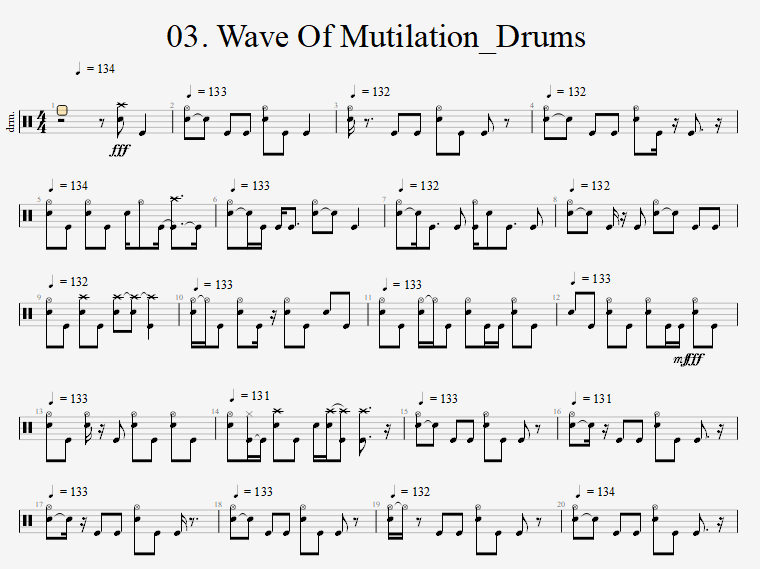You’ve mentioned this before and I was hoping we could discuss in a bit more detail. My experience doesn’t line up with yours and I’m curious why that might be.
As an example, let’s take Wave of Mutilation by Pixies. It’s listed as a 132bpm song, and analyzing it with RipX confirms this to be the case:

OK great, let’s fire up Reaper, set a new project to 132bpm, import the song and line up the beat markers:

OK, so far so good. But by bar 3 we are already starting to see drift. And when we get to bar 11 it looks like this:

And by the time we get to the end of the two minute song, it’s drifted so far that it’s almost in time again:

So clearly there exists at least one song that is recorded without strict adherence to tempo. The differences are pretty small bar to bar, but they appear early on and add up over the course of the song.
OK, let’s do one of those machine transcriptions. We’ll export MIDI from RipX and import into Guitar Pro and pay close attention to the tempo changes it notes (yes this transcription is ugly, ewww):
Throughout the piece, the tempo on a bar-by-bar basis ranges from 131bpm to 135bpm. From one bar to the next, I never see a change of more than 2bpm. Most often it’s just a single bpm.
Let’s look at what a 2bpm change equates to at that tempo:
| Beats per Minute |
132.000 |
134.000 |
| Beats per Second |
2.200 |
2.233 |
| Seconds Per Beat |
0.455 |
0.448 |
| 4/4 Bar (Seconds) |
1.818 |
1.791 |
|
|
|
| Absolute Difference per Bar (Seconds) |
|
0.027 |
| Percentage Difference per Bar |
|
1.493 |
|
|
|
| Absolute Difference per Beat (Seconds) |
|
0.007 |
| Percentage Difference per Beat |
|
1.493 |
OK, so play a full measure just 27 milliseconds too fast or slow, and you’re off by 2bpm. I’m sure the drummer is attempting to play a consistent 132 bpm and probably is under the impression that he did exactly that. But clearly it’s a human drummer and there are these small variations that come with the territory.
So yes, in my limited experience real songs do in fact do this when objectively measured. They’d still write “132” on the sheet music, though, and people would still try to play it consistently at 132, with variable results.
OK, so what am I missing here, what am I getting wrong? I’d love to be able to set the tempo on my DAW and just have the beats line up, but it never seems to work out that way. I’ve recently discovered that tempo mapping is a thing and need to understand that process better, but @howard I don’t recall you mentioning ever having to do anything like that.






